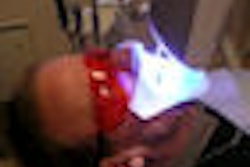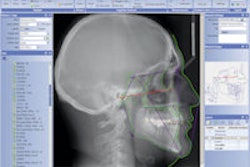
Bleaching gels do not alter calcium and phosphorus concentrations on the enamel surface, according to an in vivo study in the current Journal of the American Dental Association (June 2012, Vol. 143:6, pp. 580-586).
Researchers from São Leopoldo Mandic Institute and Research Center in Brazil examined the changes in calcium and phosphorus concentrations in enamel after the use of home-use and in-office bleaching treatments inside the mouth.
"A lot has been said about the effects of dental bleaching on enamel, and we need to clarify such effects in vivo," said study author Flávia Lucisano Botelho do Amaral, DDS, in a DrBicuspid.com interview.
“Saliva has an important role in teeth remineralization.”
— Flávia Amaral, DDS
The interference of dental bleaching on calcium and phosphorus concentration -- that is, the quantification of mineral loss in vivo -- has not been reported until this latest research, he added.
For this study, the researchers recruited 80 patients from the center who did not have caries and periodontal disease but had an indication for dental bleaching. The participants were randomly assigned to four groups of 20 each according to the bleaching agent used. A total of 65 participants completed the study.
The researchers required that the study participants have six maxillary and six mandibular anterior teeth and that they not have restorative material covering more than one-sixth of each buccal surface.
The bleaching techniques used included 10% home-use carbamide peroxide (Opalescence PF 10%, Ultradent), 20% home-use carbamide peroxide (Opalescence PF 20%), 35% in-office hydrogen peroxide (Pola Office With 35% HP, SDI), and 38% in-office hydrogen peroxide (Opalescence Boost PF 38% HP).
The authors evaluated the teeth before the bleaching treatment; during the bleaching treatment at seven, 14, and 21 days; and after the bleaching treatment at seven and 14 days.
The evaluation was done using enamel microbiopsies -- a method of collecting samples from enamel without causing any injuries to the dental structure -- after which they determined calcium and phosphorus concentrations in milligrams per milliliter by using a spectrophotometer.
Microbiopsies can be helpful when determining the effects of dental bleaching on the mineral content of enamel in a clinical situation, in which the teeth are constantly submitted to the remineralizing-demineralizing influence of human saliva, noted the study authors.
A buffering capacity
After analyzing each bleaching agent individually, the study authors found no differences among calcium and phosphorus concentrations at the three evaluation times (baseline, during bleaching, and after bleaching). This most likely is caused by the protective effect of saliva, which promotes dilution, supplements calcium and phosphorus ions for enamel remineralization, and has a buffering capacity, they noted.
"We can expect that saliva has an important role in teeth remineralization that can counteract the effects of dental bleaching," Dr. Amaral said.
In vivo, different dental bleaching techniques did not alter the inorganic composition of enamel, the authors concluded.
"Some in vitro studies have shown that dental bleaching causes severe mineral loss, and our study showed the contrary, which is really surprising," Dr. Amaral said.
A 2009 Ohio State University study found that teeth lost some enamel hardness after the application of several different at-home teeth-whitening products (Journal of Dentistry, March 2009, Vol. 37:3, pp. 185-190).
The authors of that study used five name-brand home whiteners on samples of human teeth and compared the effects to tooth samples that received no treatment. The products used in the study were Crest Whitestrips Premium Plus, Crest Whitestrips Supreme, Nite White ACP, Oral B Rembrandt, and Treswhite Opalescence.
"Nanohardness and elastic modulus of human enamel were significantly decreased after the application of home-bleaching systems," they found.
However, another in vivo study that examined the effect of 38% hydrogen peroxide in-office whitening agent found that the bleaching agent does not damage enamel. Researchers looked at 20 patients who received bleaching treatments with a 38% hydrogen peroxide bleaching agent (Opalescence Boost PF) four times at one-week intervals.
"The results of our in vivo study indicate that in-office bleaching with Opalescence Boost PF, applied once per week for four weeks, did not produce significant alterations in enamel surface roughness," the authors of that study concluded. "This would indicate that the appropriate use of high-concentration bleaching products has no harmful effects on enamel surface micromorphology."
Dr. Amaral emphasized that further studies are needed to confirm the findings of the current study.



















